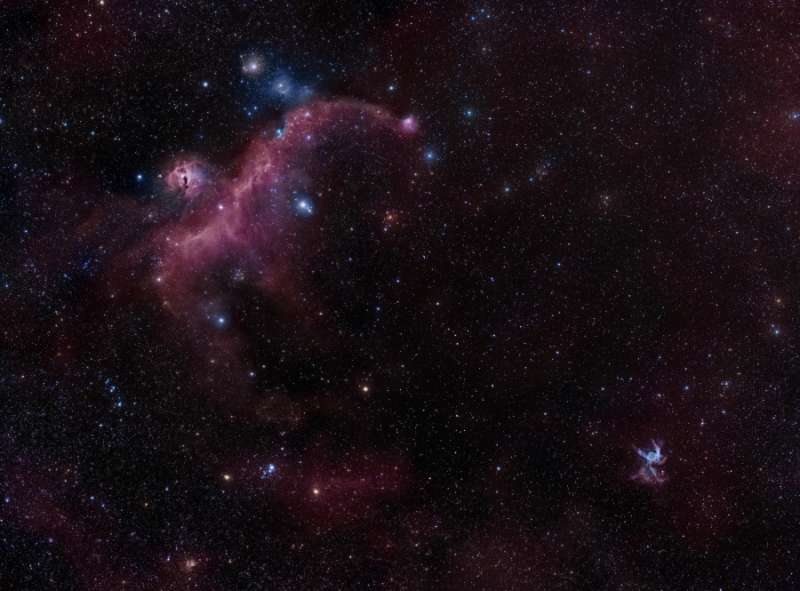
|
Credit & Copyright: Rogelio Bernal Andreo
(Deep Sky Colors)
Explanation:
Seen as a seagull and a duck, these nebulae are
not the only
cosmic clouds to
evoke images of flight.
But both are winging their way across this broad
celestial landscape, spanning almost 7 degrees across
planet Earth's night sky
toward the constellation
Canis Major.
The expansive Seagull
(upper left) is itself composed
of two major cataloged
emission nebulae.
Brighter NGC 2327 forms the head with the more diffuse
IC 2177 as the wings and body.
Impressively, the Seagull's
wingspan would correspond to about 250 light-years at
an estimated distance of 3,800 light-years.
At the lower right, the Duck appears much more compact and
would span only about 50 light-years given its
15,000 light-year distance estimate.
Blown by energetic winds from an extremely massive,
hot star near its center, the Duck nebula is cataloged
as NGC 2359.
Of course, the Duck's thick body and winged appendages
also lend it a more dramatic popular moniker --
Thor's Helmet.
|
January February March April May June July August September October November December |
| ||||||||||||||||||||||||||||||||||||||||||||||||
NASA Web Site Statements, Warnings, and Disclaimers
NASA Official: Jay Norris. Specific rights apply.
A service of: LHEA at NASA / GSFC
& Michigan Tech. U.
Based on Astronomy Picture
Of the Day
Publications with keywords: emission nebula
Publications with words: emission nebula
See also:
- APOD: 2025 September 19 Á The NGC 6914 Complex
- APOD: 2025 September 10 Á The Great Lacerta Nebula
- APOD: 2025 July 21 Á Cats Paw Nebula from Webb Space Telescope
- APOD: 2025 July 16 Á The Rosette Nebula from DECam
- APOD: 2025 July 5 Á Ou4: The Giant Squid Nebula
- APOD: 2025 June 26 Á The Seagull Nebula
- NGC 6164: A Dragon s Egg
